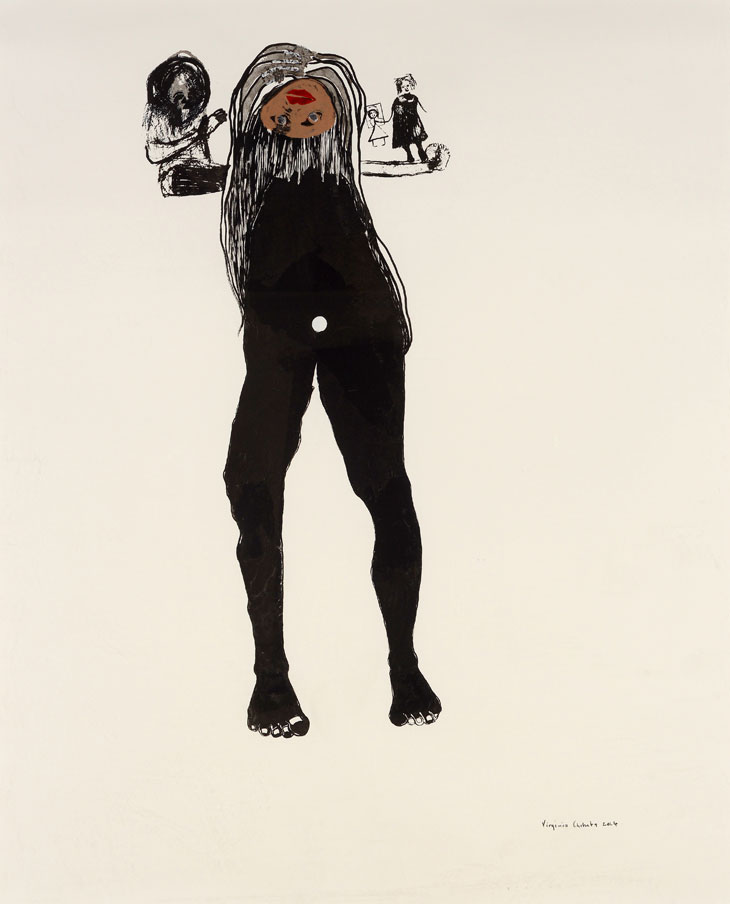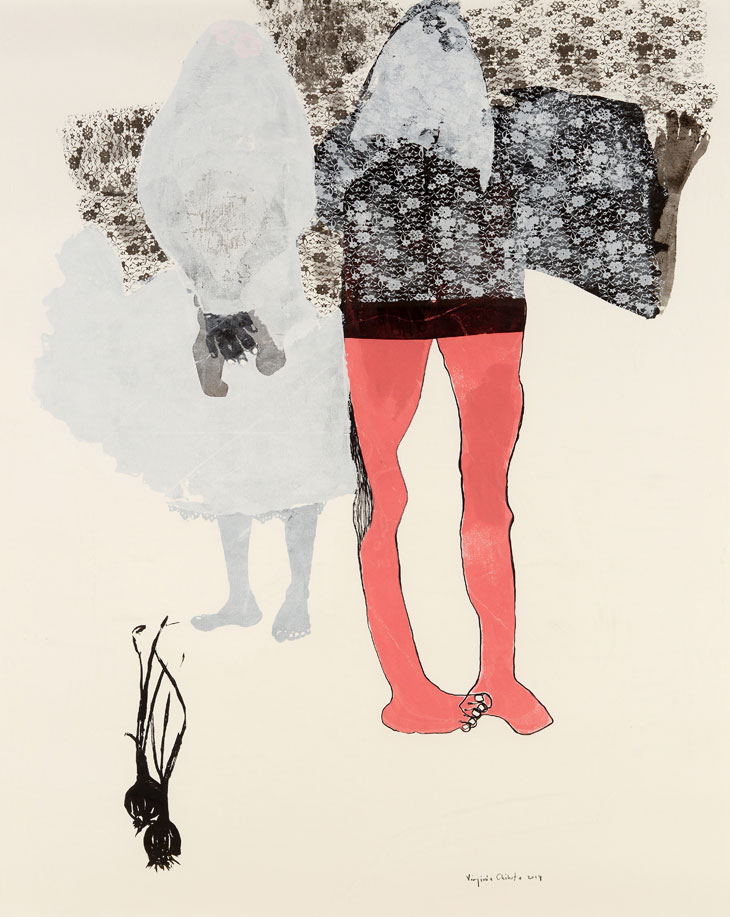1.jpg)

2.jpg)

Virginia Chihota
Virginia Chihota’s paintings occupy a space between reality and dream where she is able to work through responses to personal relationships. Her starting point, a blank sheet of paper, becomes the boundless world at the start of a new relationship, whether romantic, religious or professional, and she uses paint and ink to impose the limitations onto it that are always encountered as a relationship progresses. Working with screen-printing and paint on paper, these works from her series ’A Thorn in my Flesh (munzwa munyama yangu)’, explore the dichotomies of strength and weakness, the thorn being representational of turmoil in life. Positive and negative are two sides of the same coin and neither can exist without the other, an understanding of which can help us to use the negative to nurture the positive.
Having moved to Tripoli, Libya in 2012, the Zimbabwean native is inspired by her personal relationships and the reoccurring themes of isolation and cultural dislocation, which fuel her highly introspective works. Most recently, the artist’s experiences of relocation, marriage and motherhood have influenced how she moves through the world and interacts with the people in it. The body is the point of departure for these transient experiences, and she uses it with expressive force; colours are strong, white, black and red, and shapes are at once fluid and concrete.
Chihota picks up and dangles her subjects, like a puppeteer, into uncomfortable and unfamiliar blank spaces, where they are understandably vulnerable and anxious. Her work allows her to take a broken relationship where tensions have built up, and gives her the freedom to explore the possible ways to heal the wounds. She treats a relationship as a case study to research where she has gone wrong. Her subjects, in their inky corporeality, are parts of her. The two works on display here, both titled Raising Your Own (Kuero Wako), 2014 , are wrapped up in childrearing and marriage. Motifs, such as the wedding dress, are handled with delicacy.
Chihota’s bride is shrinking and silenced on her wedding day, her face and legs painted over with white so that she disappears into the paper. A black veil, more commonly associated with funerals hovers like an apparition behind her and her masked groom. We see the fruits of the marriage, juggled on stubby, foreshortened arms by a bearded, head-rolling bride. She seems at ease, despite her contortionism. The two pieces express a contradiction of the binding convention of marriage and primal maternal instinct. Through her work, Chihota lays bare her personal experiences as a woman, a mother and a wife, as she shares with us the ecstatic heights and plummeting depths of love and loneliness.
1.jpg)

2.jpg)
